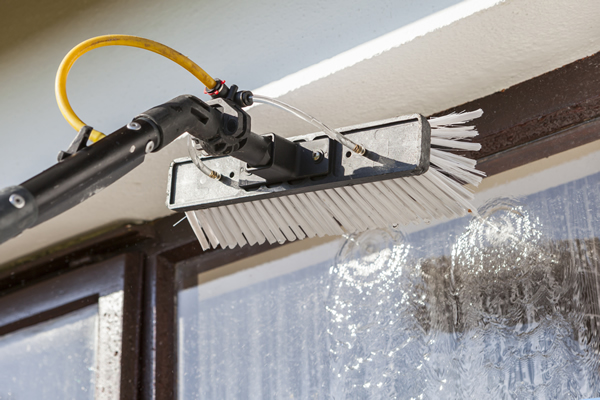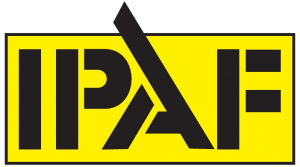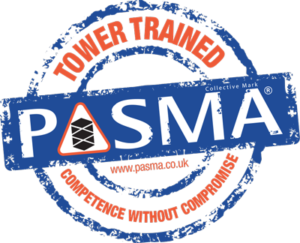Water-fed poles
Water-fed poles are becoming increasingly popular amongst window cleaners. This article aims to give accurate information about this modern window cleaning method, including the advantages and disadvantages when compared with the traditional method, and to dispel any myths surrounding its use.
What is a Water-Fed Pole System?
A water-fed pole system (AKA ‘Reach-n-Wash’) comprises a tank of purified water mounted in the back of a van, a hose, and an extendable pole with a specialiced brush on the end. There are other components but these are the main parts. Purified water is pumped from the tank, through the hose and up the inside of the pole before jetting out of the brush-head. As the brush-head, with water spraying out, is moved across the window it removes the dirt and washes it away. After the whole window has been brushed the pole is lifted away from the surface of the glass, and more water is sprayed onto the window to give it a final rinse. The window is left to dry naturally, and because the water is totally pure there are no mineral deposits or other residues left over.
What are the advantages?
Water-fed pole systems offer many advantages over the traditional method, both to cleaners and to their customers. Here are the main advantages to having your windows cleaned with a water-fed pole system:
- It’s safer for the cleaner as he can clean upstairs windows from ground level.
- It‘s less likely to damage your property as there are no heavy, cumbersome ladders that could fall over, or be dropped whilst being moved from window to window
- Water-fed pole systems are much better at cleaning window frames than cloths, so this extra service can be provided for less cost.
- It’s quicker than the traditional method.
- It does not compromise privacy as upstairs windows are cleaned from ground level.It is not necessary to dry windows, so there is no risk of cloth-smears being left on the glass.
- It’s environmentally friendly as no detergent or other chemicals are used.
- Unlike ladders, poles do not need to be used on even ground, meaning windows that are inaccessible to a ladder can usually be reached with a pole. Long poles can also safely reach windows that are up to 70 feet high, much higher than can be reached with a ladder.
...And the disadvantages? There’s a flip side to every coin, and water-fed poles are no exception.
Here are the disadvantages:
- The cleaner needs to be able to park close enough to your property for the hose (usually 100 metres long) to reach your windows. This will not affect the vast majority of properties.
- If there are very stubborn marks on your windows, such as adhesive substances like paint or glue, they will not be removed by the brush-head, so the cleaner may have to switch to the traditional method, and probably charge extra, to remove them. It is worth noting that extremely few traditional-style cleaners will remove such marks without charging extra.
- If your window frames are very dirty, or if a film of detergent has built up on your windows from previous traditional-style cleaning, then it may take two cleans to leave your windows looking their best. This is because the brush-head may not reach all the dirt in any nooks and crannies in your frames in just one clean, nor might it totally remove a thick film of detergent in one go. The pole system will leave your windows wet however, and the water may pick up leftover dirt or detergent and run down the glass, leaving it behind in faint streaks once it has dried. This is a rare occurrence and the problem nearly always disappears after the second clean.

The Bath Window Cleaning Company have been cleaning my windows for over two years, and they have consistently delivered the goods. They always do a great job, even on my third/fourth storey windows. If you need a professional, high-quality service then look no further.”



